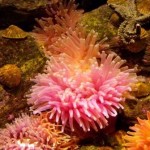
Plant the tubers in the fall or spring, unless you live north of their adapted zones in this case, plant in the spring.īefore planting, soak the tubers for a few hours or overnight if you soak them overnight, you will be able to see the slightly swollen areas from which shoots will grow. Windflowers should be grown in very well-drained, moderately fertile soil in a lightly shaded or sunny location. If the Anemone has fibrous roots, divide the plant in early spring or autumn but keep the plant in the pot for a year until established. If rhizomatous, separate the rhizomes in spring. If the planted Anemone is tuberous, separate the tubers in summer, when the plant is dormant. Most Anemones should be planted in the fall. japonica - Japanese AnemoneĪnemone narcissiflora - Narcissus AnemoneĪnemone ranunculoides - Yellow Woodland Anemone/buttercup anemoneĭifferent Anemones have different growing requirements. Popular species of Anemones and their common names are as follows:Īnemone hupehensis var.

The fruits often bear long hairy styles, which aid their distribution by the wind. There is an involucre of three leaflets below each flower. The elongated flower stem bears one or several, white, red, blue or rarely yellow flowers.

The Anemone plants are perennial herbs with an underground rootstock, and radical, more or less deeply cut leaves. The name Anemone comes from Greek and roughly means wind flower, which signifies that the wind that blows the petal open will also, eventually, blow the dead petals away. Anemones are closely related to Pasque flower (Pulsatilla) and Hepatica (Hepatica) some botanists include both of these genera within the genus Anemone.

Anemones grow wild in many European countries, in North America, and Japan. The genus Anemone consists of 120 species of perennial flowering plants, which grow from tubers. Anemone comes from anemos, the greek word for wind, thus giving Anemone the name wind flower.


 0 kommentar(er)
0 kommentar(er)
